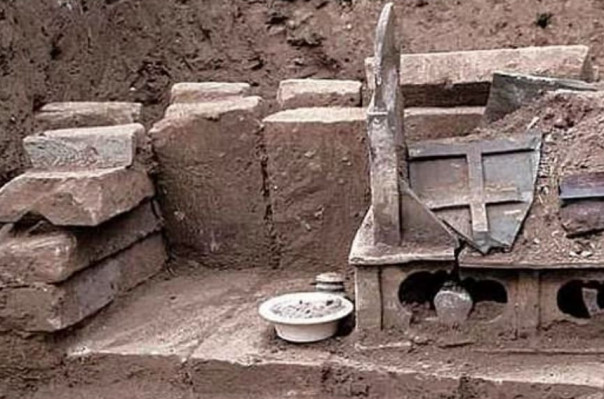Human remains buried by a pair of monks in China over a millennia ago are claimed to belong to Buddha.
Believers say the 2,000 pieces of cremated bones belonged to Siddhartha Gautama, whose teachings became the foundations of the Buddhist religion.
The cremated bones were found in an ceramic box with an inscription claiming they belong to Buddha, who is believed to have died 2,500 years ago, reports the Daily Mail.
The box was found in Jingchuan County, China, alongside more than 260 Buddhist statues.
Monks from the Mañjuśrī Temple of the Longxing Monastery in China’s Jingzhou Prefecture, named Yunjiang and Zhiming, are said to have spent two decades collecting the artefacts from neighbouring countries.
Buddha, the philosopher and teacher, who is thought to have renounced his royal inheritance to follow a life of a spirituality, was born in modern day Nepal.
Holy texts say he travelled through the eastern parts of India sometime between the 6th and 4th centuries BC.
Legend also says that upon his death, around 2,500 years ago at the age of 80, Siddhartha Gautama’s remains were divided up among his disciples and royalty and spread far and wide.
The Buddha’s remains were originally meant to to go only to the Shakya clan, to which he belonged.
However, six clans and a king demanded the relics.
To avoid fighting, a religious leader divided them into ten portions, eight from the body relics, one from the ashes of Buddha’s cremation pyre and one from the pot used to divide the relics, which he kept for himself.
The Buddha’s relics were then enshrined and worshipped in stupas by his followers.
Any relic said to relate to known to relate to the Buddha, whose name means ‘enlightened one’, is known as a śarīra.
The discovery of the chest, known as an ossuary, was made by villagers conducting roadworks near the temple around five years ago.
It is said to contain more than 2,000 cremated remains, including teeth and bones.
It has only just been reported in English by the journal Chinese Cultural Relics.















